New Jersey, despite its relatively small size, boasts an impressive variety of wildlife species within its borders.
Among these fascinating creatures are the birds of prey, which occupy a vital ecological niche and captivate observers with their majestic presence.
Birds of prey, also known as raptors, include species such as hawks, eagles, owls, and falcons, distinguished by their exceptional hunting skills and sharp, powerful beaks and talons.
In New Jersey, these formidable birds occupy diverse habitats, ranging from dense forests to open grasslands, offering a thrilling opportunity for enthusiasts to study and appreciate their behaviours and unique adaptations.
This introduction will provide an overview of the remarkable birds of prey found in New Jersey, highlighting notable species, their habitats, hunting techniques, and the conservation efforts to protect their populations.
14 Birds of Prey in New Jersey
New Jersey, with its diverse landscapes ranging from coastal marshes to dense forests, supports a wide variety of birds of prey.
Here are 14 species of raptors that can be found in New Jersey:
1. Red-tailed Hawk (Buteo jamaicensis)
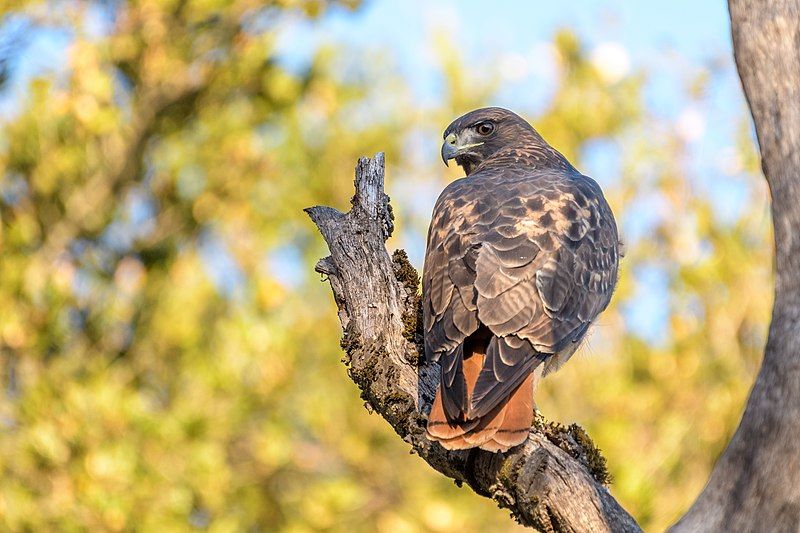
The Red-tailed Hawk, Buteo jamaicensis, is one of the most common birds of prey in North America, identifiable by its broad, rounded wings and short, wide tail, often displaying a rich reddish hue.
This adaptable raptor inhabits various environments, from deserts and grasslands to forests and urban areas. It feeds primarily on small mammals, such as rodents and rabbits, captured in flight from a high perch or during soaring.
The Red-tailed Hawk’s distinctive, raspy scream is iconic in movies and television and is often used to represent any eagle or hawk. They are monogamous and can reuse the same nest for several years, refurbishing it annually.
| Kingdom | Animalia |
| Phylum | Chordata |
| Clade | Dinosauria |
| Class | Aves |
| Order | Accipitriformes |
| Family | Accipitridae |
| Genus | Buteo |
| Species | B. jamaicensis |
2. Red-shouldered Hawk (Buteo lineatus)
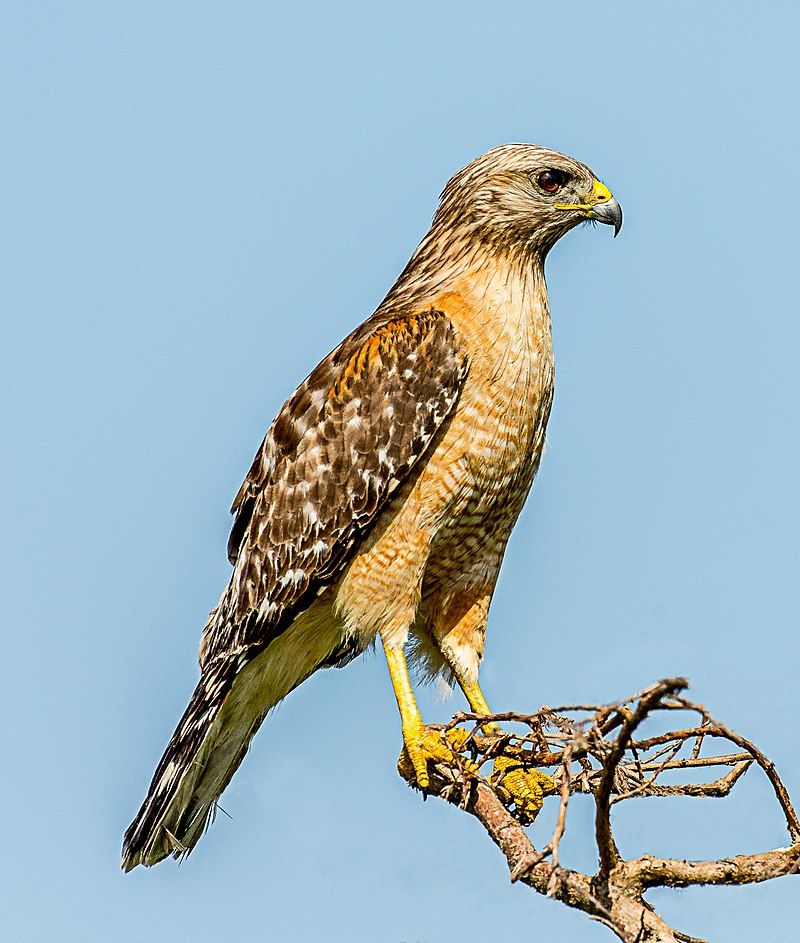
Buteo lineatus, or the Red-shouldered Hawk, is a medium-sized bird of prey known for its striking plumage and vocal nature.
Found in wooded areas near water sources across the eastern United States, this hawk has a distinctive appearance with reddish-brown shoulders, a barred chest, and a tail with narrow white bands.
Red-shouldered Hawks feed on small mammals, amphibians, and reptiles, often hunting from a perch within dense forests.
Their loud kee-ah calls, distinct from other hawks, serve as a territorial signal and a means of communication between mates. These birds are cavity nesters, utilizing the natural breaks in trees or abandoned nests of other species.
| Kingdom | Animalia |
| Phylum | Chordata |
| Class | Aves |
| Order | Accipitriformes |
| Family | Accipitridae |
| Genus | Buteo |
| Species | B. lineatus |
3. American Kestrel (Falco sparverius)
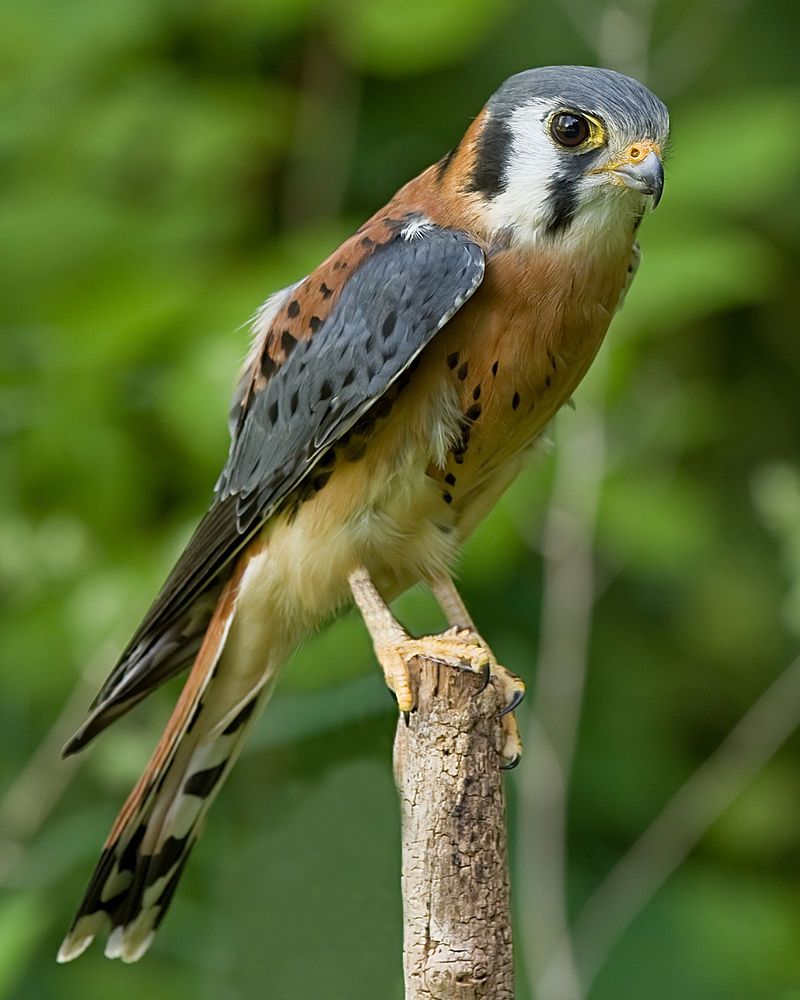
The American Kestrel, Falco sparverius, is North America’s smallest and most colourful falcon. This bird exhibits sexual dimorphism, with males with slate-blue wings and females with rufous tones.
American Kestrels are found in various habitats, including open fields, urban areas, and deserts. They are known for their hovering flight, which they use to spot prey such as insects, small rodents, and birds before diving to capture them.
Kestrels also utilize man-made structures for nesting, adapting well to urban environments. Despite their small size, they are formidable hunters, using speed and agility to catch prey.
| Kingdom | Animalia |
| Phylum | Chordata |
| Class | Aves |
| Order | Falconiformes |
| Family | Falconidae |
| Genus | Falco |
| Species | F. sparverius |
4. Cooper’s Hawk (Accipiter cooperii)
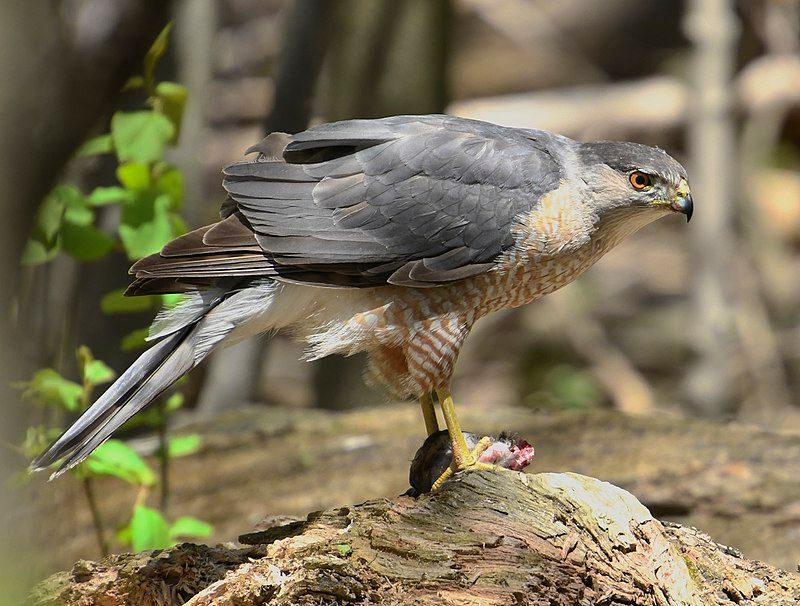
Accipiter cooperii, the Cooper’s Hawk, is a medium-sized hawk commonly found in wooded and suburban areas across North America.
Characterized by its blue-grey back, reddish-barred breast, and long, rounded tail, the Cooper’s Hawk can navigate dense foliage to catch birds and small mammals.
Once persecuted for preying on poultry, their populations have rebounded, and they are now a common sight even in urban areas.
Cooper’s Hawks are known for their flight agility, allowing them to manoeuvre through trees during high-speed chases. They are monogamous and often return to the same nesting area each year.
| Kingdom | Animalia |
| Phylum | Chordata |
| Class | Aves |
| Order | Accipitriformes |
| Family | Accipitridae |
| Genus | Accipiter |
| Species | A. cooperii |
5. Osprey (Pandion haliaetus)
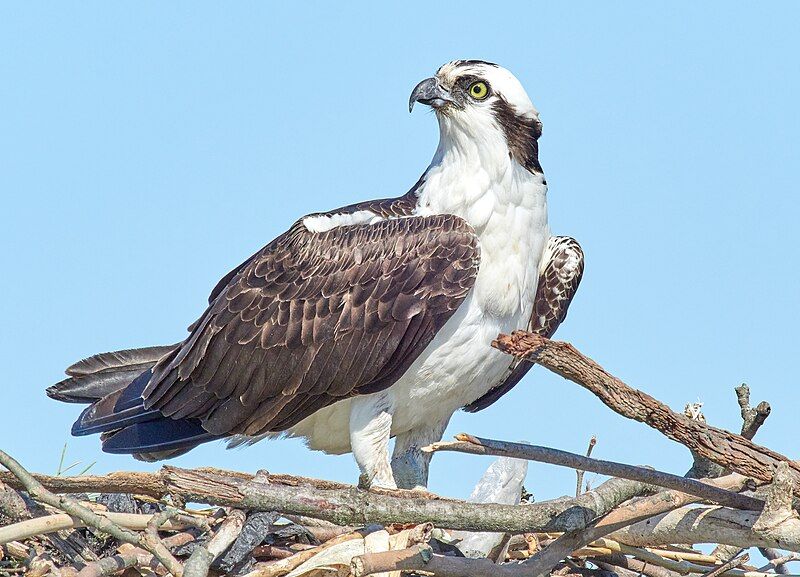
| Kingdom | Animalia |
| Phylum | Chordata |
| Class | Aves |
| Order | Accipitriformes |
| Family | Pandionidae |
| Genus | Pandion |
| Species | P. haliaetus |
6. Sharp-shinned Hawk (Accipiter striatus)
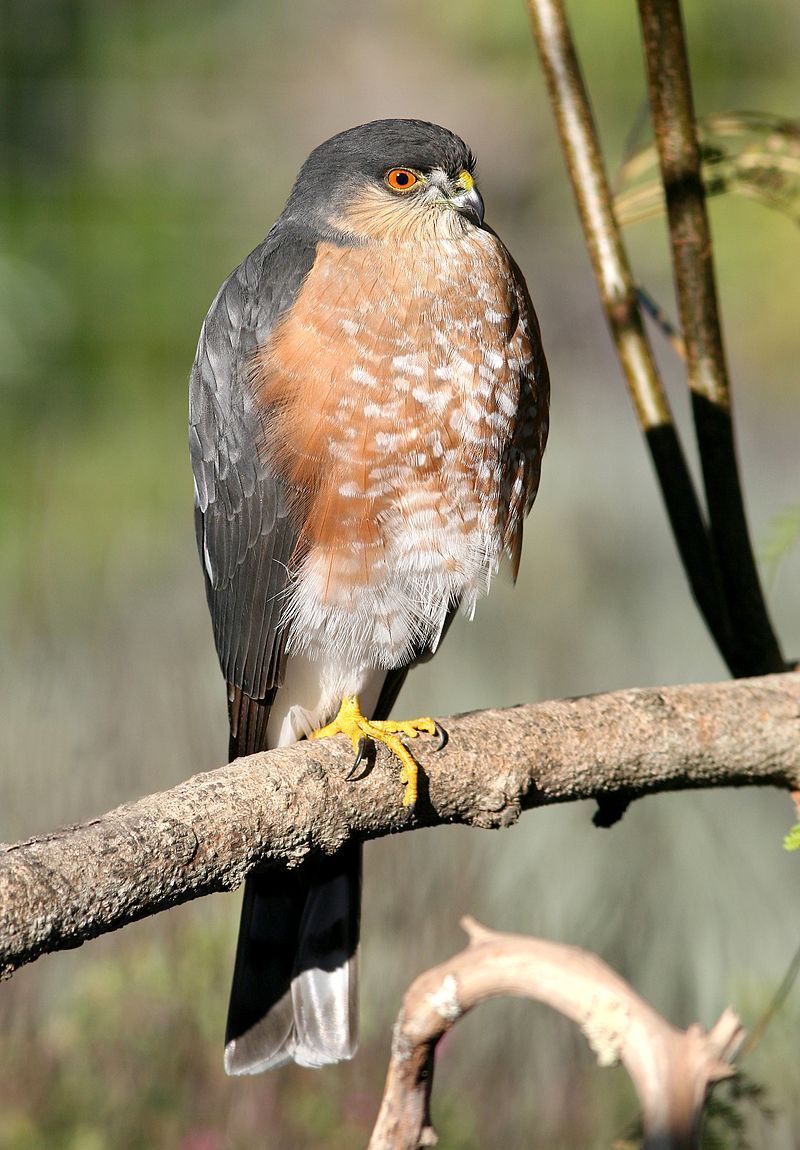
The Sharp-shinned Hawk, Accipiter striatus, is the smallest hawk in North America, known for its agility in dense forests and distinctive flight pattern.
This bird of prey has a slate-grey back, barred underparts, and a narrow, square-tipped tail, features that enable it to manoeuvre through trees while hunting small birds, its primary prey.
Sharp-skinned hawks are migratory, breeding in northern forests and wintering in southern regions. They are often seen darting across clearings or surprise attacking birds at feeders.
Despite their small size, they are fierce hunters, employing surprise and speed in their hunting strategy. Their presence in a habitat indicates a healthy ecosystem, although they are often mistaken for their larger cousin, the Cooper’s Hawk.
| Kingdom | Animalia |
| Phylum | Chordata |
| Class | Aves |
| Order | Accipitriformes |
| Family | Accipitridae |
| Genus | Accipiter |
| Species | A. striatus |
7. Bald Eagle (Haliaeetus leucocephalus)
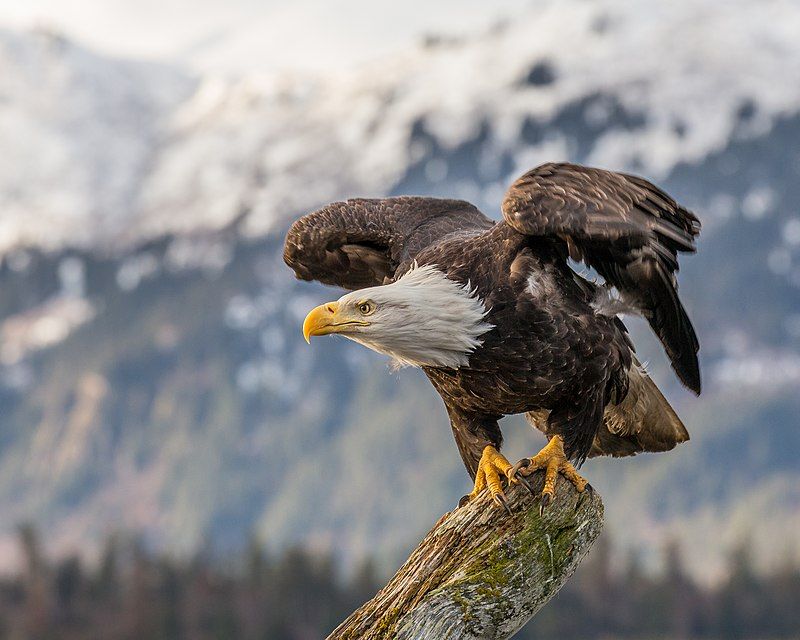
The Bald Eagle, Haliaeetus leucocephalus, is a symbol of American wilderness and the national bird of the United States.
This majestic bird of prey is easily recognizable by its white head and tail, contrasting with its dark brown body and wings.
Bald Eagles are found near lakes, rivers, and coastal areas, where they feed primarily on fish, snatching them from the water with powerful talons. They are also known to scavenge and steal prey from other animals.
Bald Eagles build some of the largest nests of any bird species, often reused and added to each year, becoming massive structures.
Their recovery from the brink of extinction is a significant conservation success story, showcasing the effectiveness of environmental laws and protections.
| Kingdom | Animalia |
| Phylum | Chordata |
| Class | Aves |
| Order | Accipitriformes |
| Family | Accipitridae |
| Genus | Haliaeetus |
| Species | H. leucocephalus |
8. Great Horned Owl (Bubo virginianus)
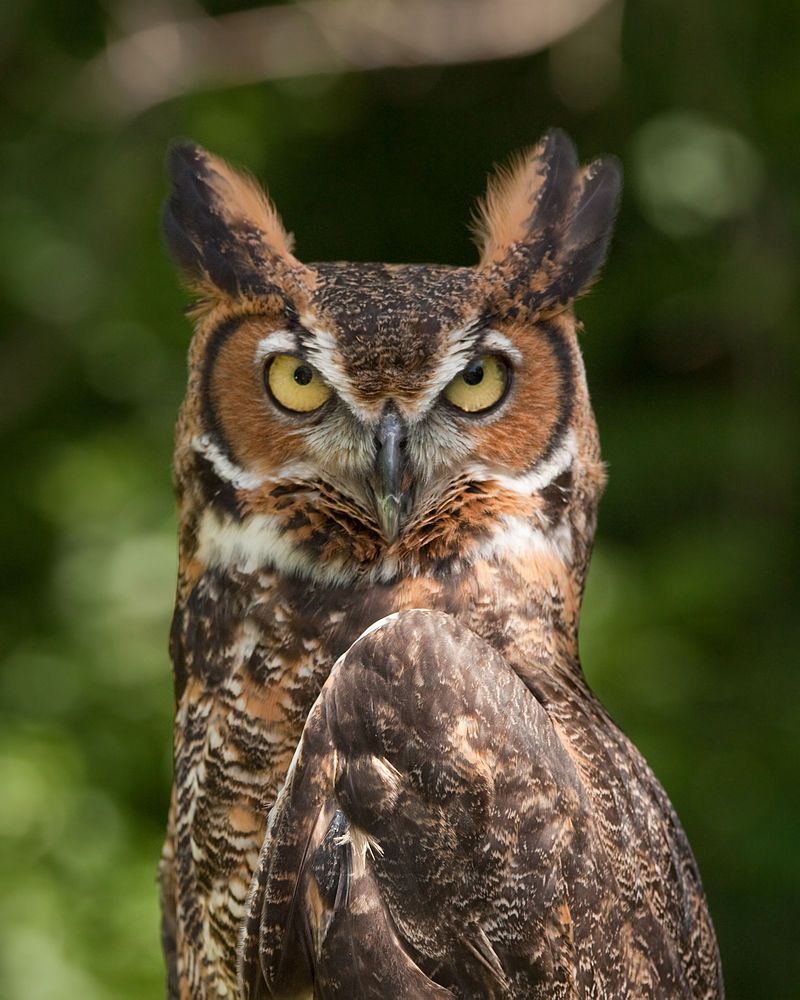
The Great Horned Owl, Bubo virginianus, is a versatile and powerful bird of prey, found across a wide range of habitats in the Americas.
With its distinctive ear tufts, deep hooting voice, and intense yellow eyes, the Great Horned Owl is a master nocturnal hunter, preying on a variety of animals, including rabbits, skunks, and even other raptors.
Its camouflage plumage allows it to blend into its surroundings, making it a formidable ambush predator. Great Horned Owls are known for their adaptability to human presence, nesting in everything from tree cavities to abandoned buildings.
They play a crucial role in controlling pest populations and maintaining the ecological balance.
| Kingdom | Animalia |
| Phylum | Chordata |
| Class | Aves |
| Order | Strigiformes |
| Family | Strigidae |
| Genus | Bubo |
| Species | B. virginianus |
9. Golden Eagle (Aquila chrysaetos)
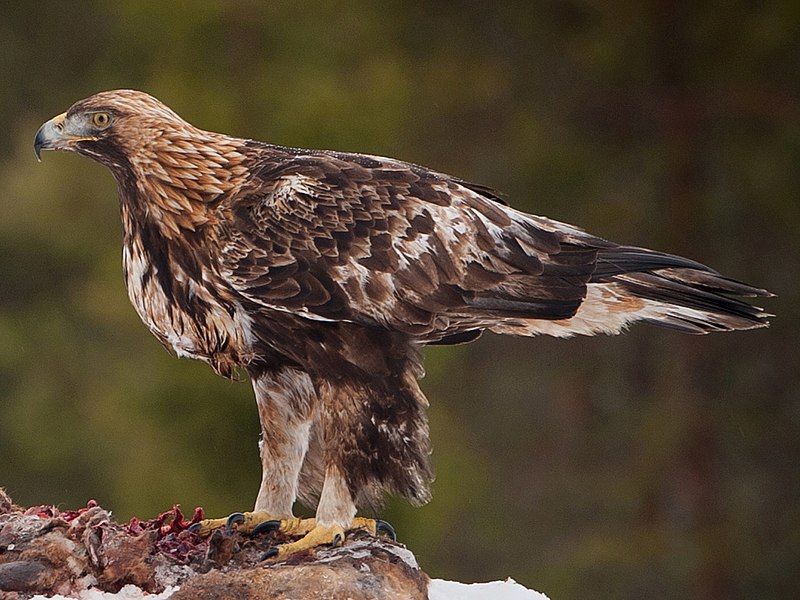
Aquila chrysaetos, the Golden Eagle, is among the best-known birds of prey, revered for its strength and speed. This magnificent raptor has dark brown plumage with lighter golden-brown nape feathers, earning its name.
Golden Eagles inhabit open and semi-open regions, including mountains and moorlands, where they hunt rabbits, marmots, and even large mammals such as deer.
They are solitary birds, often hunting and living alone or in pairs, and are known for their impressive aerial displays during courtship. Golden Eagles build large nests, or eyries, on cliff faces and high trees, showing fidelity to these sites over many years.
Their presence symbolizes wilderness and freedom, with significant cultural and spiritual value in many societies.
| Kingdom | Animalia |
| Phylum | Chordata |
| Class | Aves |
| Order | Accipitriformes |
| Family | Accipitridae |
| Genus | Aquila |
| Species | A. chrysaetos |
10. Barred Owl (Strix varia)
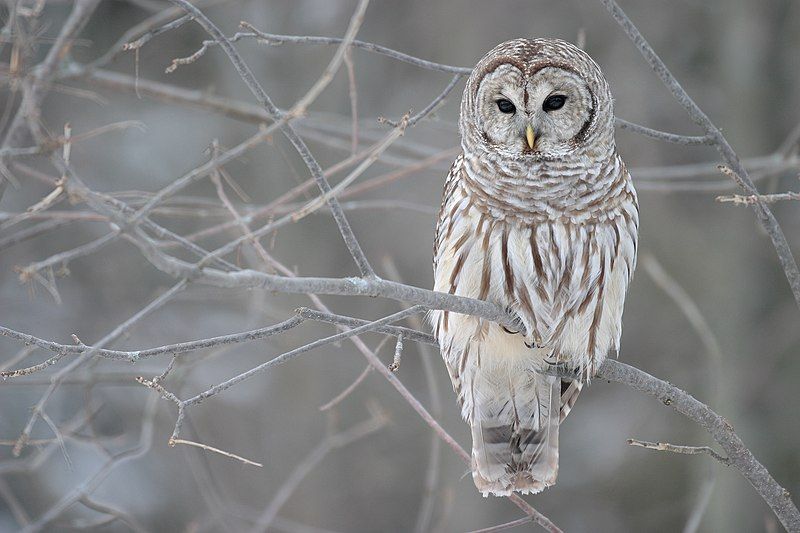
The Barred Owl, Strix varia, known for its distinctive “Who cooks for you? Who cooks for you all?” call, is a medium-sized owl with a round head, brown and white striped plumage, and no ear tufts.
This owl prefers dense woodlands and swamps, where it hunts at night for small mammals, birds, and amphibians, relying on its exceptional hearing and silent flight.
Barred Owls are year-round residents of their range, not typically migrating. They are known for being more vocal and active during the night but can also be heard during daylight hours.
Their adaptation to human-altered landscapes has led to increased encounters with people, raising concerns about competition with the endangered Spotted Owl in parts of the West.
| Kingdom | Animalia |
| Phylum | Chordata |
| Class | Aves |
| Order | Strigiformes |
| Family | Strigidae |
| Genus | Strix |
| Species | S. varia |
11. Eagle (General Overview)
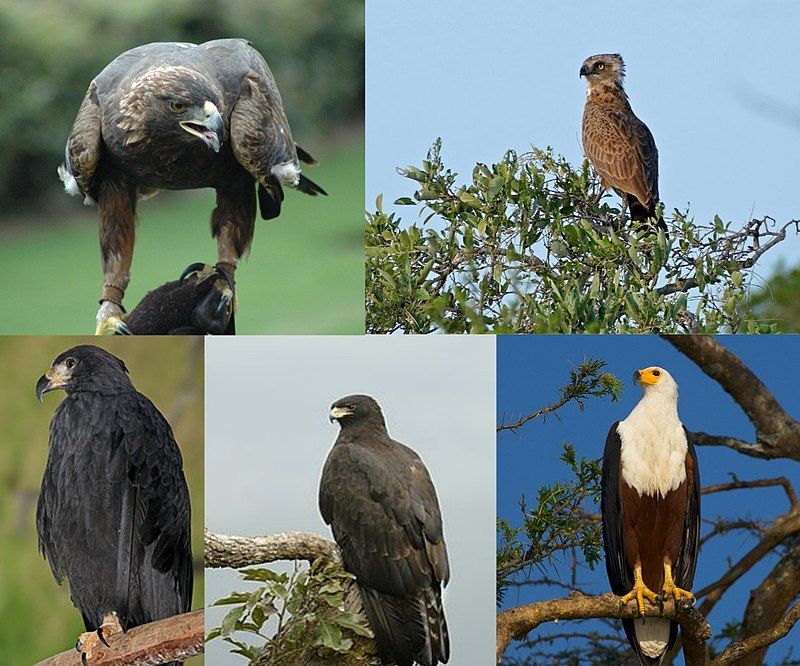
Eagles are large, powerful birds of prey, belonging to several genera that are not closely related, most notably Haliaeetus (sea eagles) and Aquila (true eagles).
These majestic birds are characterized by their heavy beaks, broad wings, and strong bodies, enabling them to soar at high altitudes while scanning for prey.
Eagles are found worldwide, except in Antarctica, occupying habitats ranging from deserts and forests to mountains and coastal regions.
They feed on a diet ranging from fish and small mammals to other birds. Eagles have long been symbols of freedom, power, and majesty, featuring prominently in folklore, religion, and national emblems.
Their conservation status varies by species, with some thriving and others facing threats from habitat loss and hunting.
| Kingdom | Animalia |
| Phylum | Chordata |
| Class | Aves |
| Order | Accipitriformes |
| Family | Accipitridae |
12. Turkey Vulture (Cathartes aura)
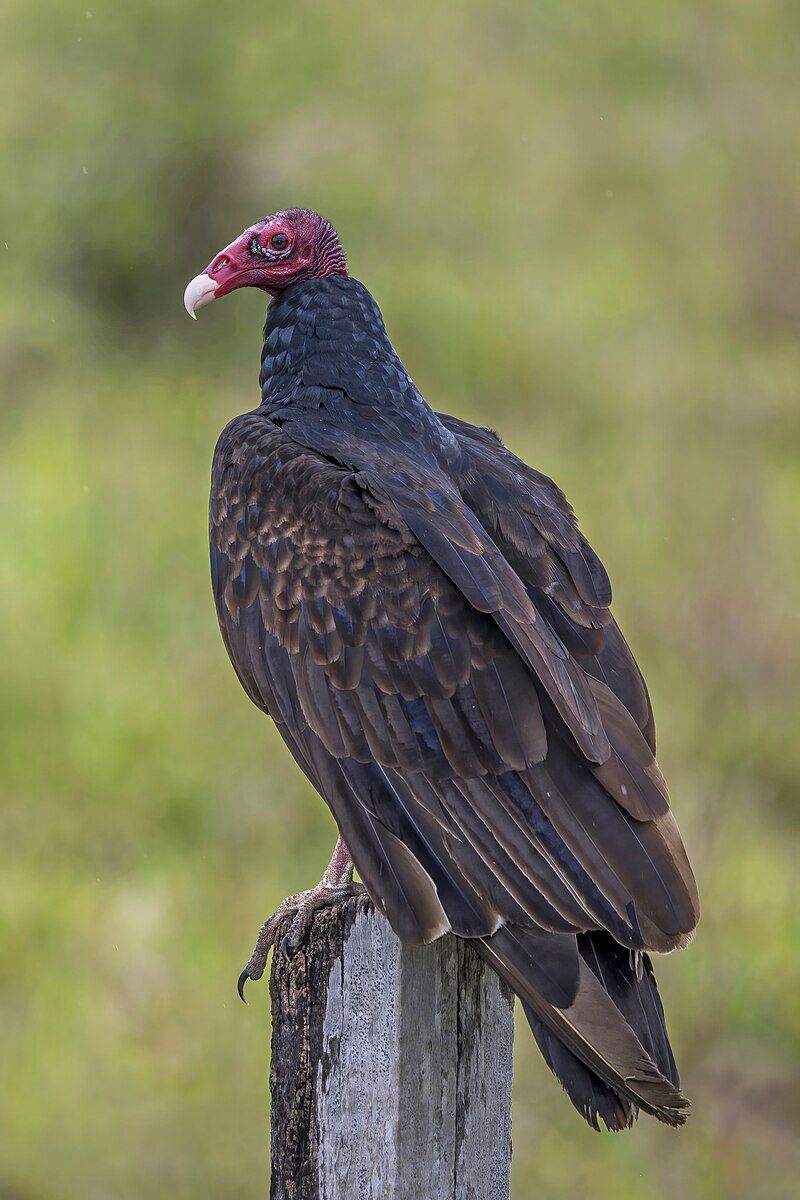
The Turkey Vulture, Cathartes aura, is a scavenger recognized by its red, bald head and dark body, with a keen sense of smell that allows it to detect carrion from great distances.
Unlike other birds of prey, it has a relatively weak beak and talons, adapted more for tearing rotting flesh than hunting.
Turkey Vultures play a crucial role in the ecosystem by cleaning up dead animals and helping to prevent the spread of disease.
They are social birds, often seen roosting in large groups and soaring in thermals with their wings held in a distinctive V-shape.
Their flight is graceful and efficient, allowing them to cover vast areas in search of food without expending much energy.
| Kingdom | Animalia |
| Phylum | Chordata |
| Class | Aves |
| Order | Accipitriformes |
| Family | Cathartidae |
| Genus | Cathartes |
| Species | C. aura |
13. Black Vulture (Coragyps atratus)
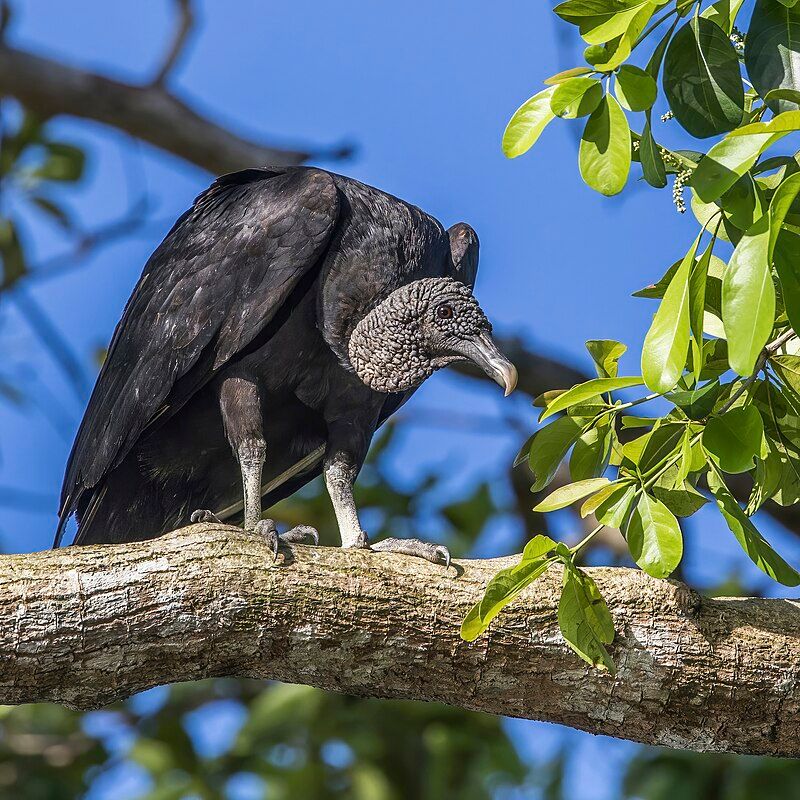
The Black Vulture, Coragyps atratus, is a scavenger with a stark black appearance and a short, hooked beak for tearing carrion.
Unlike the Turkey Vulture, which relies heavily on olfaction, Black Vultures are more dependent on their sight and the presence of other scavengers to locate food.
They are gregarious birds, often found in large communal roosts, and have been known to display aggressive behaviour toward each other and other species at food sources.
Black Vultures are vital to the ecosystem, serving as nature’s clean-up crew, but their adaptability has sometimes brought them into conflict with humans, particularly in areas where they damage property or livestock.
| Kingdom | Animalia |
| Phylum | Chordata |
| Class | Aves |
| Order | Accipitriformes |
| Family | Cathartidae |
| Genus | Coragyps |
| Species | C. atratus |
14. Vulture (General Overview)
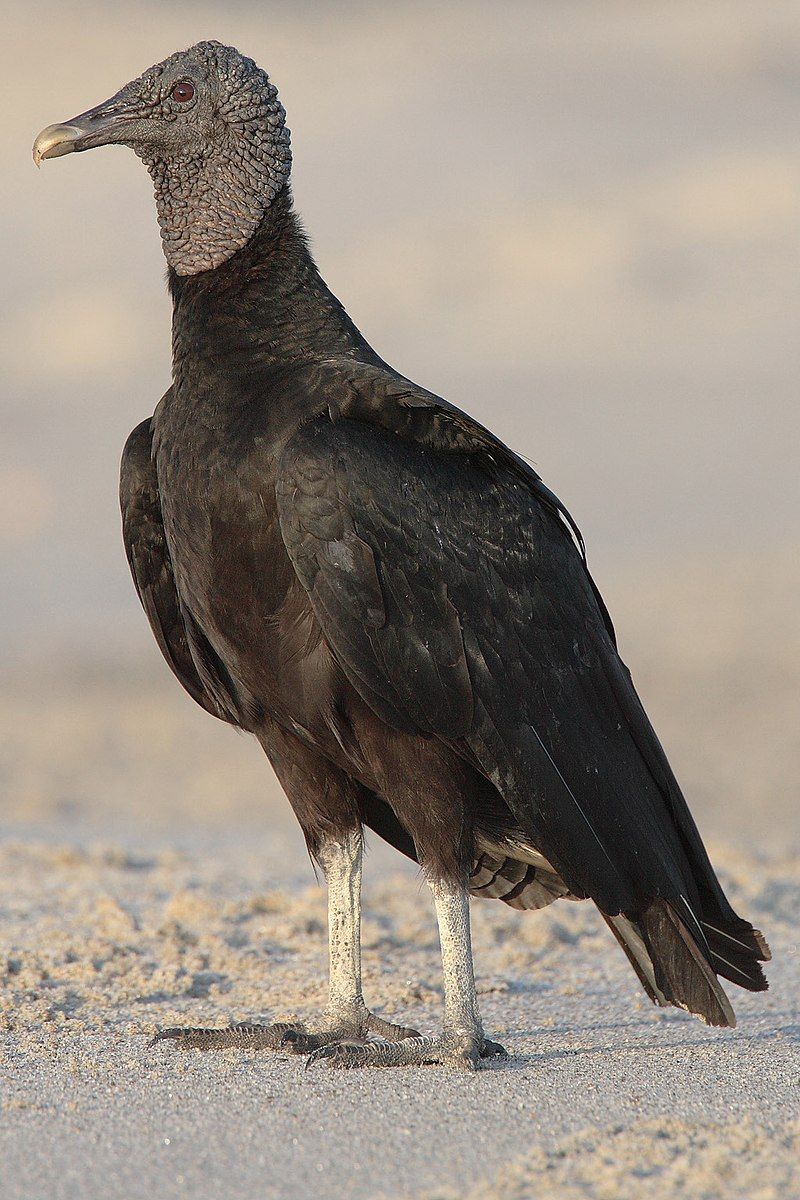
| Kingdom | Animalia |
| Phylum | Chordata |
| Clade | Ornithurae |
| Class | Aves |
Conclusion
Birds of prey play a vital role in maintaining the ecological balance in New Jersey. The state is home to various majestic creatures, including the Bald Eagle, Peregrine Falcon, and Red-tailed hawks.
Their presence indicates a healthy ecosystem and signifies the conservation efforts undertaken to preserve their habitats.
These birds serve as indicators of environmental health and are a source of inspiration and admiration for birdwatchers, conservationists, and nature lovers alike.
It is crucial that we continue to protect these magnificent creatures and their habitats to ensure their survival for future generations.
By supporting environmental initiatives and habitat restoration projects and promoting public education, we can help safeguard the birds of prey in New Jersey and foster a sustainable environment for both wildlife and humans.